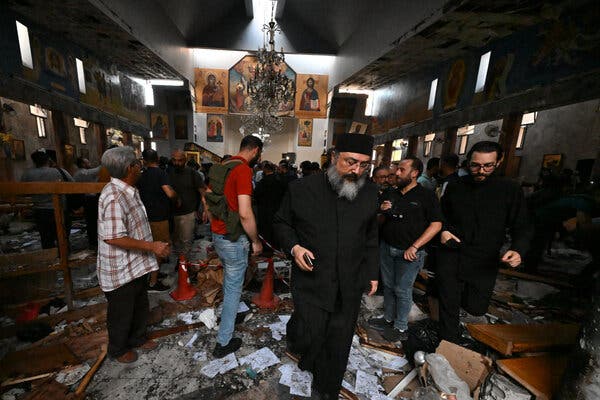Israel entered the skirmish zone amid a violent churning between Druze groups and Bedouin clans in the southern Syrian city of Sweida, launching an attack on Syrian General Staff’s main office in Damascus this past Wednesday. This incident brings to light the fallacies in believing that the regime transition, which happened in December of 2024, would usher in an era of democracy and tranquility within Syria, and instead highlights the looming threat of a full-scale regional conflict.
The seeds for the Sweida conflict were sown on July 13, when a Druze businessman was abducted by Bedouins from the Damascus-Sweida highway. The paramount control over the city of Sweida lies with the Druze militias, a group that staunchly resisted joining the military forces of the Hayat Tahrir al-Sham (HTS) government, which was formed after the dethroning of erstwhile President Bashar al-Assad.
The newly installed regime in Damascus advanced into Sweida city on Tuesday, following escalating confrontations between the resisting Druze groups and the Bedouin tribes. Reports indicate an unsettling death toll exceeding 300 people, as a direct outcome of these volatile skirmishes taking place in Sweida.
The regime alteration in Damascus in December significantly eroded Iran’s dominance within the country. This political transformation has also injected new momentum into the rivalry between two prominent US allies: Israel and Turkey.
Ankara’s military continues to occupy northern Syria for countering Kurdish forces, while at the same time, Israel perceives Ankara’s sturdy political and ideological bonding with the reigning HTS regime as a potential threat to their own leverage.
In the Syrian context, Washington is striving to devise a synchronized strategy involving Turkey, Israel, the HTS regime, and Kurdish factions allied to the PKK. The primary target of such a policy is Iran and its collaborative entities.
In light of these developments, US Secretary of State Marco Rubio released a statement on Wednesday evening stating, ‘We have actively involved all parties embroiled in the Syrian disputes. There is an agreement in place on concrete actions that will cease this alarming and horrifying scenario tonight. It will necessitate that all parties fulfill the responsibilities they have pledged to, which is what we ardently hope for.’
As loyalists to the Damascus regime retreated Sweida, HTS chief Ahmad al-Sharaa, known also as Abu Mohammad al-Julani, aired his stance through a televised address on Thursday morning. He asserted, ‘War is not a deterrent for us, and dedicating our lives to face challenges and protect our community is our mission. Our utmost priority, however, is to weigh Syrians’ welfare above chaos and destruction.’
Meanwhile, the Turkish Grand National Assembly accused Israel through a resolution passed on Wednesday. The declaration strongly stressed Turkey’s support for Syrian territorial unity and its staunch resistance against any action that would destabilize their ‘brotherly and ally Syrian people.’
It continued to state that peace and stability in Syria would echo in regional peace and stability, whereas any contrary developments would solely benefit Netanyahu and his group, who they claim, have built their existence on conflict and bloodshed.
The resolution ends by emphasizing that the only feasible approach to resolving the state of Syria, now ravaged by a regime-change war and the emerging perilous power struggle amid various regional and local forces, is to embrace an international socialist perspective.
This perspective aims to bridge the gap among all laborers irrespective of their ethnic, religious, or sectarian backgrounds in a collective struggle for enhancing workers’ power and resistance against imperialism.
However, the fragile situation in Syria continues to present significant challenges due to the intricate weave of international allegiances and interests, internal strife, and the competing agendas of external powers.
Ultimately, the hope for peace and stability in the region rests not just on the resolution of current conflict, but also on the dismantling of the systems and structures that have historically contributed to such destabilizing confrontations.
Thus, as tensions continue to rise, it is critical for all parties involved to engage in dialogue and consensus-building, focusing on the larger picture of regional peace and stability, rather than narrow, sectarian, or nationalistic interests.
Indeed, the future of Syria, and potentially the greater region, depends on the ability of these disparate groups to recognize their common interests, transcend divisive narratives and work together towards a shared vision of peace and prosperity.

